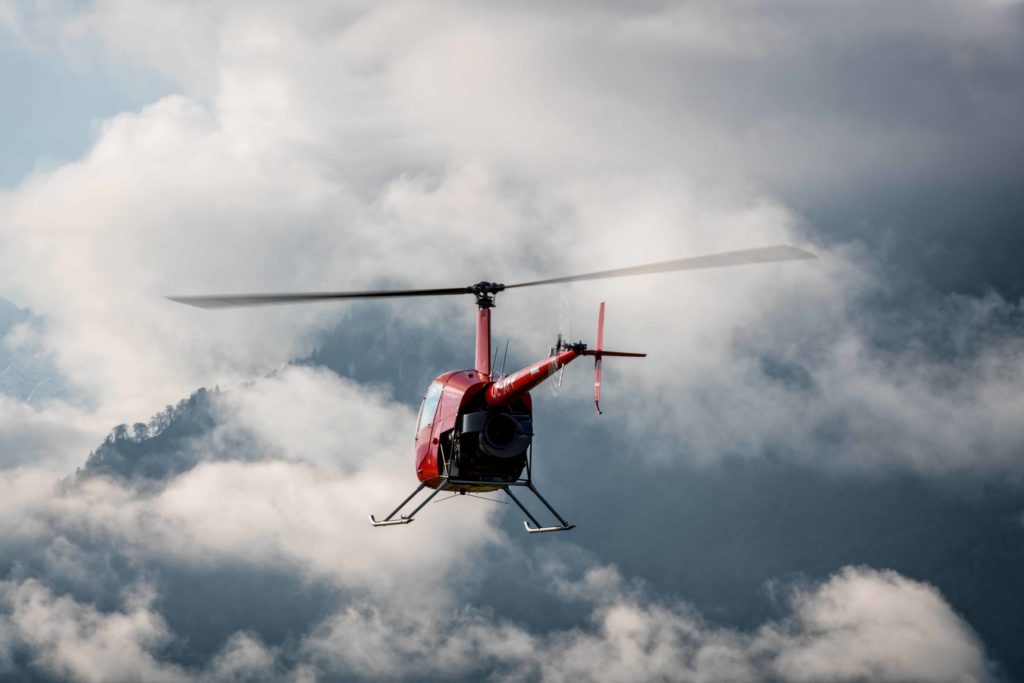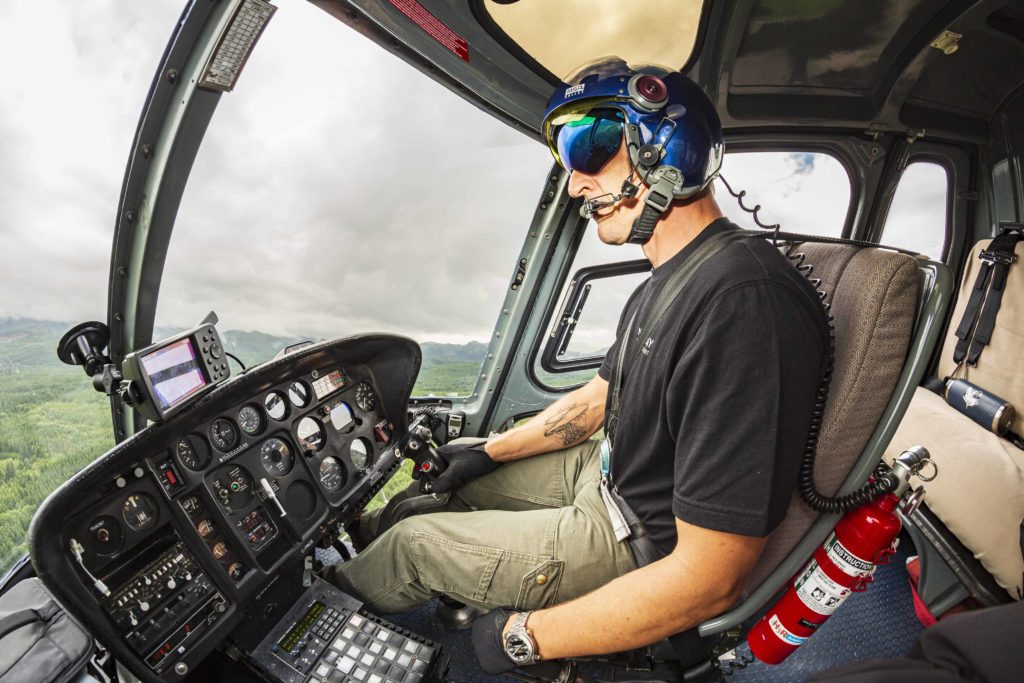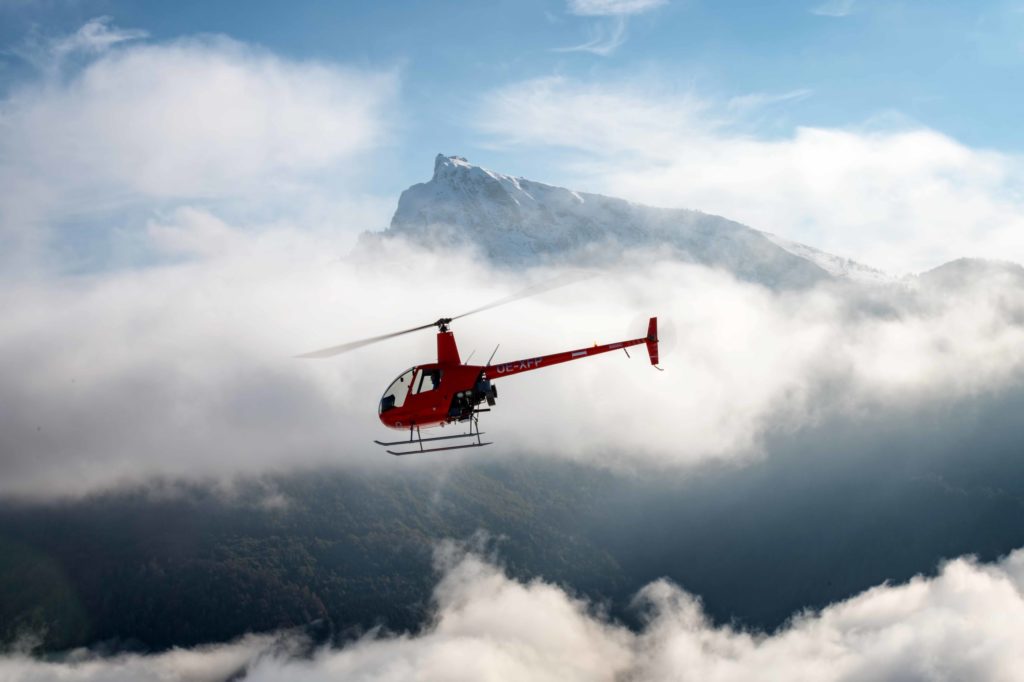I’ve been a helicopter pilot for over 50 years, and I find it interesting that during this time the helicopter community has never reached a consensus as to what a pilot should do when they suddenly punch into clouds. Hell, we haven’t even settled on what to call it, let alone what to do about it. Early in my career it was called “inadvertent IFR.” This is obviously technically incorrect, so it became “inadvertent IMC” — often shortened to “IIMC” or “double IMC.” The Commercial Aviation Safety Team then changed the term to “unintended IMC” (UIMC), which I think is where we’re at now. I’ll refer to both IIMC and UIMC here.

But in terms of what to do when IIMC or UIMC occurs, the thinking has been (and still is) all over the map.
Before I go any further, I want everyone to clearly understand we are still killing people left and right by pilots pushing on in weather that makes crash investigators just shake their heads. The U.S. Helicopter Safety Team (USHST) analyzed 10 years of U.S. helicopter fatal accident data, and UIMC accounted for 15 percent of all accidents — one of the three highest aviation occurrence categories. Across 2019, 2020 and 2021, the National Transportation Safety Board’s (NTSB’s) preliminary investigations support 15 fatal UIMC crashes with 40 fatalities. Think about that — 40 fatalities in three years, many of them passengers who had no say in their fate. Think of the families that have been devastated by the loss of a parent or child, all because a pilot pushed it too far. We’re not learning from our mistakes.
In an inadvertent IMC situation, the airplane community has always relied on variations of the “four Cs” — control, climb, course & communicate — and many helicopter instructors teach this. The USHST even published a training fact sheet recommending the four Cs in certain situations a few years ago.
However, when adapted to the world of rotary-wing aircraft, the inherent instability of the helicopter makes getting past the first “C” (control) extremely difficult.
Some instructors recommend a 180-degree turn to exit the clouds. But think about this: a standard rate turn of three degrees per second will mean 60 seconds will have passed — a full minute — before you’ve turned 180 degrees. That’s a long time, and maintaining control, airspeed and altitude during the turn is going to be very difficult. Increasing the bank angle will lessen the time, but control becomes more difficult in a steep turn.
Other instructors teach to immediately initiate a climb. That’s great, but you still have to get past that first “C” — and then what are you supposed to do?
Last, a technique that has gathered more supporters over the last few years is to enter an autorotation. The thinking being that it’s a very stable form of helicopter flight and the fastest way to exit the clouds.
However, the wide variation in helicopter types, instruments available and, most importantly, the disparity in pilot training and proficiency, make each of these choices debatable — hence the lack of a consensus.
During a private or commercial pilot practical test, when applicants are posed with a UIMC scenario, I frequently hear them declare they’re going to “trust the instruments.” It sounds so simple, so non-threatening — just trust the instruments, they’ll get you home.
Nothing could be further from the truth. As the USHST/HAI video “56 Seconds to Live” so clearly shows, this can be a fatal decision.
Avoidance is key
The helicopter community finally seems to be focusing on the most important aspect of unintended flight into instrument conditions — AVOIDANCE! Don’t fly into the damn clouds in the first place!
In the past, we’ve just paid lip service to the idea of avoidance. Every article, presentation or instructor lecture I hear begins with the caution, “Do your best to avoid punching into the clouds, but if you do….” Then they start down the rabbit hole of whatever IMC procedure or technique they’re pushing.

We now have a specific process for how to avoid UIMC. I wish I could take credit for this process, but I can’t. It was developed from the recent work of the US Helicopter Safety Team, the “56 Seconds to Live” video (along with HAI’s companion online course), the Federal Aviation Administration (FAA), and input from both Airbus Helicopters and the Robinson Helicopter Company. This “Avoidance Process” needs to be taught at every level of pilot training, from private through commercial, and recurrent to type ratings. Scenario training, simulators and flight training devices are perfect tools to teach the process.
There are three stages to the Avoidance Process, and it begins with the decision to take off.
So many IIMC fatal accidents begin with a flawed decision to take off in the first place. “I’ll just take a look,” “I’m familiar with the route,” or “I’ve handled this before,” are just a few of the rationalizations pilots use to take the first step down the path towards disaster.
I think the most effective technique to help pilots make good takeoff decisions is to develop a clear, concise set of personal weather minimums for day and, if necessary, night flight. Pilots in the personal/private sector should get with an instructor and (based on experience, local weather patterns, etc.) determine the minimum weather you are going to fly in — ceiling, visibility and wind.
Forget about the cloud clearance and visibility requirements for VFR flight in part 91 (14 CFR § 91.155). They are only meant for aircraft separation and have nothing to do with keeping you out of the clouds. The thinking is, if you’re trying to get home on a Sunday afternoon, the weather’s deteriorating and that “get-home-itis” pull is getting stronger, you’ve already decided your minimum weather. Now, you need the discipline (a 2.5-mile visibility is not three, or a 500-foot ceiling is not 800 feet) to implement your minimums. Without them, many pilots will find some justification to “give it a try.”

The second stage to the Avoidance Process involves enroute decision triggers. I used to call these “enroute decision points,” but the U.S. Helicopter Safety Team’s Safety Enhancement #127 uses the term “trigger.” I think this is much better, because it connotates action. The Safety Enhancement defines these as “a predetermined set of conditions that ‘trigger’ a decision during flight.” Think of them as a caution or warning light on the instrument panel.
The three most useful triggers are location, airspeed and altitude.
Firstly, during the preflight planning process, identify a location to use as a decision trigger. It could be a point where the weather is forecast to deteriorate, a point where a diversion to a nearby airport is easy or, perhaps, where terrain becomes more challenging — such as mountains, desert or over water.
Next is airspeed. Whether in your car or in a helicopter, what do you instinctively do when the visibility is getting worse and worse? You slow down. So, in flight, if the visibility decreases to where you have to slow more than 30 knots from cruise, that should be the trigger. Turn around, divert or land.
However, slow no less than Vy – best rate of climb speed. Vy is the bottom of the power required curve, so if the helicopter slows below Vy, it moves up the backside of the power required curve — requiring more power not less.

The last trigger point is altitude. I think a minimum altitude of 300 feet above ground level (AGL) during the day and 500 feet AGL at night works well. However, increasing these numbers is fine. Again, the thinking is that if the inflight ceiling is getting lower and lower and you have to descend below 300 feet AGL to remain clear, that’s the trigger.
Land and live
Kurt Robinson begins every Robinson Safety Course with a discussion about a magazine article written several years ago by Matt Zuccaro, the longstanding former president of HAI, which was titled “Land the Damn Helicopter.” In the article, Zuccaro said he couldn’t understand why helicopter pilots, flying a machine that can land almost anywhere, don’t take advantage of this unique ability. Instead, they too often press on in poor weather, and it ends up costing them and their passengers’ lives. Zuccaro’s article evolved into HAI’s “Land and Live” program. And to this, I’d like to add four words: “…or Continue and Die.”
This call to “land the damn helicopter” is the third pillar of the Avoidance Process. In my career, I’ve had many flights in which I’ve just had to “land the damn helicopter” because of changing conditions. Once in a field, once in a parking lot, and once on the median between the north/south lanes of Interstate 15. I simply waited until the weather improved — which one time was a couple of hours — but I “landed and lived.” In fact, just like pilots who use the “I’ve handled this before” thinking to drive on, I’ve “landed and lived” enough times that I don’t think twice about putting the ship down to wait out the weather.
Sure, there are certainly complications to deal with when you “land the damn helicopter”— the police wanting an explanation, upset passengers, or perhaps the press asking questions to name a few, but look at the alternative. So, land and Live, and don’t worry about a possible FAA enforcement action — it will not happen.

It’s rare for the conditions that should trigger a decision to land to appear instantly during a flight. It’s normally a noticeable deterioration, instead. So, as the conditions worsen, look for potential precautionary landing areas, note obstructions or hazards along the route, and mentally prepare yourself to “land the damn helicopter.”
Of course, there will always be instances where pilots press on and eventually punch into the weather. My advice at this point is to take your hands off the controls, and place your palms together underneath your chin, fingers pointed upward — because you now have 56 seconds to live. Better to spend these last precious seconds saying goodbye to loved ones or greeting your maker.
But seriously, what should one do if they inadvertently find themselves IMC? I will not go down that rabbit hole other than to quote Bruce Webb from Airbus Helicopters: “We all have a limited mental capacity, and this situation will require all of it.”





